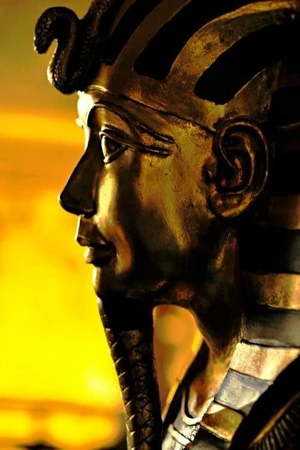Αμένωφις Γ' ο Μεγαλοπρεπής
Amenhotep, Αμένωφθις, Memnon
Pharaohs, Eighteenth dynasty of Egypt

Όνομα: Αμένωφις Ηγεμονικά Ονόματα
Αίγυπτος Ηγεμόνες Αιγύπτου Ηγεμόνες Ελληνιστικής Αιγύπτου Αιγυπτιακή Αυτοκρατορία Ηγεμόνες Αιγυπτιακής Αυτοκρατορίας
>>Αρχαιο-Αιγυπτιακή<< Δυναστεία 0α (0a) Δυναστεία 0β (0b) Δυναστεία 1η (I) Δυναστεία 2η (II)
>>Παλαιο-Αιγυπτιακή<< Δυναστεία 3η (III) Δυναστεία 4η (IV) Δυναστεία 5η (V) Δυναστεία 6η (VI)
>>Πρώτη Ενδιάμεση<< Δυναστεία 7η (VII) Δυναστεία 8η (VIII) Δυναστεία 9η (IX) Δυναστεία 10η (X) Δυναστεία 11α (XIa)
>>Μεσο-Αιγυπτιακή<< Δυναστεία 11β (XIb) Δυναστεία 12η (XII)
>>Δεύτερη Ενδιάμεση<< Δυναστεία 13η (XIII) Δυναστεία 14η (XIV) Δυναστεία 15η (XV) Δυναστεία 16ης (XVI) Δυναστεία 17η (XVII)
>>Καινο-Αιγυπτιακή (New)<< Δυναστεία 18η (XVIII) Δυναστεία 19η (XIX) Δυναστεία 20η (XX)
>>Τρίτη Ενδιάμεση<< Δυναστεία 21η (XXI) Δυναστεία 22η (XXII) Δυναστεία 23η (XXIII) Δυναστεία 24η (XXIV)
>>Ύστερο-Αιγυπτιακή (Late)<< Δυναστεία 25η (XXV) Δυναστεία 26η (XXVI) Δυναστεία 27η (XXVII) Δυναστεία 28η (XXVIII) Δυναστεία 29η (XXIX) Δυναστεία 30η (XXX) Δυναστεία 31η (XXXI) Δυναστεία 32η (XXXII) Δυναστεία 33η (XXXIII)
Σουμερία (Sumer) Ηγεμόνες Σουμερίας
Ακκαδία (Akkad) Ηγεμόνες Ακκαδίας
Συρία (Martu) Ηγεμόνες Συρίας
Ισραηλία (Israel)Ηγεμόνες Ισραηλίας
Ιουδαία (Judash) Ηγεμόνες Ιουδαίας
Φοινίκη (Phoenicia) Ηγεμόνες Φοινίκης
Ασσυρία (Assyria) Ηγεμόνες Ασσυρίας
Βαβυλωνία (Babylonia) Ηγεμόνες Βαβυλωνίας
Μιταννία (Mitanni) Ηγεμόνες Μιταννίας
Χετταϊκή Αυτοκρατορία (Hatti) Ηγεμόνες Χετταϊκής Αυτοκρατορίας
Μυκηναϊκή Ελλάδα (Mycenaean Greece) Ηγεμόνες Μυκηναϊκής Ελλάδας
- Αυτοκράτορας (φαραώ) της Αιγύπτου (1388 - 1351 π.Χ.).
- Χρονική Περίοδος Διακυβέρνησης: Υστερο-Αιγυπτιακή Εποχή, 14ος Αιώνας π.Χ.
- Γέννηση:
- Θάνατος:
Ετυμολογία[]
Το όνομα "Αμένωφις" είναι εξελληνισμός του ονόματος "Amenhotep" που είναι Αιγυπτιακής προέλευσης.
Ονομασία[]
Οι διάφορες ονομασίες τις οποίες έλαβε (ή με τις οποίες αναφέρεται στην ιστορία) είναι:
- Amen-hotep = imn-Htp(w) = Amun Is Satisfied
- Heqa Waset = HqA-wAst = R uler Of Thebes
- Neb-maat-re = nb-mAat-ra = Lord Of Truth Of Re
- Πιθανότατα, πρέπει να ταυτισθεί με τον φαραώ που ο Ηρόδοτος και οι άλλοι Έλληνες γνώριζαν με το όνομα "Μέμνων" και του απέδιδαν τους γνωστούς κολοσσούς.
- Προφανώς, δεν είναι ο, πολύ μεταγενέστερος, Μέμνων του Ομήρου.
Γενεαλογία[]
- Οίκος: 18η Δυναστεία.
- Πατέρας: [[]],
- Μητέρα:
- Σύζυγοι:
- Θεία (Tiye)
- Gilukhepa, the daughter of Shuttarna II of Mitanni, in the tenth year of his reign.
- Tadukhepa, the daughter of his ally Tushratta of Mitanni, around Year 36 of his reign.
- A daughter of Kurigalzu, king of Babylon.
- A daughter of Kadashman-Enlil, king of Babylon.
- A daughter of Tarhundaradu, ruler of Arzawa.
- A daughter of the ruler of Ammia (in modern Syria).
- Τέκνα:
- Prince Thutmose
- Αμένωφις Δ' (Akhenaten)
- Sitamun (έγινε "βασιλική σύζυγος")
- Iset (έγινε "βασιλική σύζυγος")
- Henuttaneb
- Nebetah
- Σμέγχερις (Smenkhkare) (?)
- Beketaten
Βιογραφία[]
Τα σημαντικότερα ιστορικά γεγονότα της βασιλείας του είναι:
- Έτος 1 (δηλ. 1391) - Αμένωφις Γ' (Amenhotep III), 8 ετών, ανέρχεται στον θρόνο.
- Έτος 3 - Γάμος με την Θεία (Tiye).
- Έτος 5 - Εκστρατεία κατά της Αιθιοπίας (Nubia).
- Έτος 10 - Καλλιέπεια (Gulihepa), θυγατέρα του βασιλέα της Μιταννίας, Υδάρνη (Suttarna), εισέρχεται στο χαρέμιο του Amenhotep III. Ο βασιλέας της Βαβυλωνίας (Babylon) ήταν τότε ο Kadashman-Enlil που απέστειλε επίσης πριγκίπισσες.
- Έτος 17 - Ενθρόνιση του Δυσιράττη (Tusratta) στην Μιταννία (Mitanni).
- Έτος 21 - Γέννηση της θυγατέρας του, Ταδυέπειας (= Κασσιέπειας?)(Taduhepa), της μέλλουσας να μετονομασθεί ως Νεφερτίτη (Nefertete) σύμφωνα με κάποιους ερευνητές.
- Έτος 26 - Γέννηση του Amenhotep IV, του μέλλοντα Akhnaten.
- Έτος 29 - Αμένωφις Γ' (Amenhotep III), νυμφεύεται την θυγατέρα του, Sit-amun.
- Έτος 30 - Γέννηση του Smenkh-kare(?).
- Έτος 33 - Γέννηση της θυγατέρας του, της Baket-aten.
- Έτος 36 - Ο Αμένωφις Γ' (Amenhotep III) ασθενεί βαρέως, ο Δυσιράττης (Tusratta) του αποστέλλει ένα healing άγαλμα της θεάς goddess Ishtar. Γάμος με την Νεφερτίτη (Nefertete).
- Έτος 38 -Ο Αμένωφις Γ' (Amenhotep III) αποθνήσκει στην Θήβα (Thebes). Η Θεία (Tiye) γίνεται αντιβασίλισσα.
Διεθνής Πολιτική[]
Amenhotep III. took over at the beginning of government of his predecessors a powerful empire that extended from Karai between the 4th and 5th Nile Cataracts to Naharina on the border to the Mitanni Empire.
Egypt was prosperous and could undoubtedly be called world power . An important goal of foreign policy was to protect the Egyptian borders from possible attackers and to maintain diplomatic relations with the neighboring empires (especially the Mitanni and Hittites empire). Only in this way could a lasting peace be achieved, which led to lively trade relations and an unprecedented prosperity.
The power of Egypt was so strong that Amenhotep III. did not need to wage wars. Alone in his 5th year of rule, he moved against insurgent Nubia and defeated the rebels. It was to remain the only important military campaign of his term of office, beyond which it is not even clear whether the king himself took part. More likely, he left the suppression of the insurrection to his commanders and to the viceroy of Kush appointed by Egypt .
Although the Pharaoh used the funds that had previously flown in military undertakings, for his gigantic construction projects, although Amenhotep III. He did not neglect his forces, by no means.
Although the country lived in peace, borders and trade routes had to be protected.
He seems to have been the first Egyptian king to let the chariots become an independent troop unit. Also at the same time probably mounted troops were used for the first time. The army was divided into trains, companies and divisions. A company consisted of about 250 soldiers, one division could include up to 5000 men. In weapons they possessed crescent-shaped swords, daggers and bows. First armor appeared in this epoch.
- Under his reign, as a result of many-years conquests of his predecessors, Egypt has been flooded by uncounted wealth, promoting incredible flourishing of civilization.
- In 3rd regnal year, suppression of a uprising in Takhsy.
- In 7th regnal year, Amenophis led his army through Takhsy northwards, engaging a new rebel force at Shamshatam, probably on the west bank of the Orontes not far from Qatna
- In 9th regnal year, campaign at Southern Palestine.
- Some expeditions to Nubia and Kush secured continuous delivery of gold from their mines.
- He developed diplomacy – peace with Mitannia and Babylonia assured by marriage with daughters of the rulers of that countries.
- To his harem got from Mitanni, Giluhepa and Taduhepa, daughters of king Shutarna and his heir, as well as Babylonian princesses, daughters of Kurgalzu II and Kadashman-Harbes.
- His royal chief-wife and mother of his heir was queen Tiji, presumably daughter of a couple of court nobles – Yuya and Tjuyu (tomb KV46).
- Apart from emission of scarabs major historical value bear documents found in 1887 at Amarna, which are a part of so called “diplomatic correspondence”.
- Three celebrations of his sed jubilee are known, which took place in years 30, 34 and 37 of his rule.
Οικοδομική Δραστηριότητα[]
- He extended a temple at Karnak, erected magnificent funerary temple, which was the greatest one in Egypt of that times. Only two colossal statues are preserved until now (Colossi of Memnon) and some parts of the temple, like sphinx, stela, and reminders of figures. This monument had been destroyed due to earthquake in 1220 BC, thereafter pulled down and stone blocks were reused to build a funerary temple of Merenptah.
- At Malgatta he built splendid palace and many buildings all over Egypt giving the testimony to the sophisticated taste of the king and his architect Amenhotep son of Hapu.
- Apart from the palace at Malgatta and extending temples in Theban nome there are known numerous temples and other buildings all over the Land, among others at Bubastis, Athribis, Heliopolis, Sakkara.
- In the temple of Mut at Thebes He ordered to place 600 statues of goddess Sachmet. Attention should be paid also to the temple of Amen-Re at Soleb, temple of Sobek at Sumenu and temple of Amenhotep and Tiji at Sedeinga.
Ταφή[]
Οι πληροφορίες που αφορούν τον τάφο και το μομμιοποιημένο σώμα (μούμια) του είναι:
- Burial place – tomb WV22 in Western Valley of the Kings.
- King’s mummy was found in the tomb of Amenhotep II - cache KV35.
Χρονολογία[]
Οι διάφορες χρονολογίες της βασιλείας του από διακεκριμμένους Αιγυπτιολόγους, αρχαίους και νεώτερους, είναι:
- Ο Μανέθων Manethon (through Josepus, Theophilus) assigned to him a reign of 30 yrs and 10 mns.
- Manethon (through Africanus and Eusebius) assigned to him a reign of 31 yrs.
- 1410-1372 (Redford)
- 1403-1366 (Parker)
- 1402-1364 (Hornung)
- 1392-1354 (von Beckerath)
- 1391-1353 (Málek, Arnold)
- 1390-1353 (Krauss, Murnane)
- 1390-1352 (Grimal, Shaw)
- 1388-1348 (Dodson)
- 1386-1350 (Wente)
- 1386-1349 (Kitchen)
- 1384-1346 (Aldred)
- 1379-1340 (Helck)
- 1378-1339 (NarmerSite) (39 years)
Υποσημειώσεις[]
Εσωτερική Αρθρογραφία[]
- 18η Δυναστεία (XVIII)
- Ηγεμόνες Αρχαίας Αιγύπτου
- Ηγεμόνες Αιγύπτου
- Αίγυπτος
- Αρχαία Αίγυπτος
- Αιγυπτιακή Αυτοκρατορία
- Αιγύπτιοι
- Αιγύπτιοι Θεοί
Βιβλιογραφία[]
Ιστογραφία[]
|
Αν και θα βρείτε εξακριβωμένες πληροφορίες "Οι πληροφορίες αυτές μπορεί πρόσφατα Πρέπει να λάβετε υπ' όψη ότι Επίσης, |
- Μην κάνετε χρήση του περιεχομένου της παρούσας εγκυκλοπαίδειας
αν διαφωνείτε με όσα αναγράφονται σε αυτήν
- Όχι, στις διαφημίσεις που περιέχουν απαράδεκτο περιεχόμενο (άσεμνες εικόνες, ροζ αγγελίες κλπ.)
